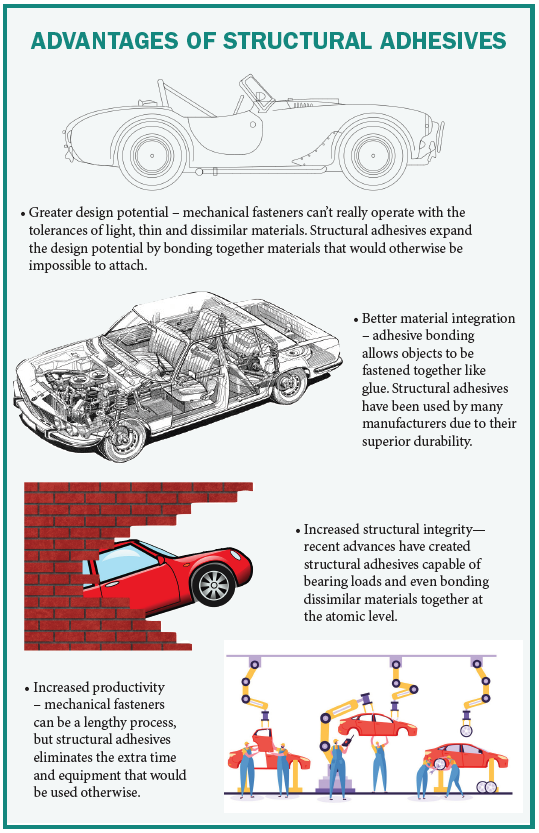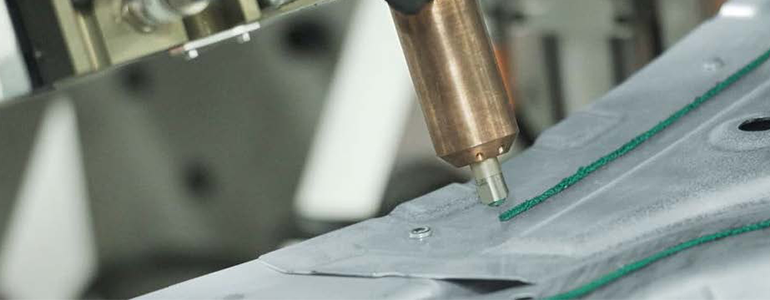STRUCTURAL ADHESIVES UNDERSTOOD
WHY MECHANICAL FASTENERS CAN’T ALWAYS COMPETE
Structural adhesives allow vehicle designers a level of flexibility that cannot be achieved with mechanical fasteners like rivets. For one thing, adhesives are simply more physically flexible. The bonds they create are, by their nature, able to accommodate more stresses without causing lasting damage to the materials they connect.
Mechanical fasteners, on the other hand, are hard on the materials they keep together, as they must be tough enough to maintain a bond between different metals and plastics, each of which have different stress tolerances. More durable products – rivets and welds could leave behind stress points that can cause breakage. Structural adhesives create a strong bond that is unbreakable.
Because of this, structural adhesives can bond together materials that would otherwise be impossible to attach—like different types of plastics and metals with differing thermal expansion properties.
While, for a long time, the main problem with structural adhesives is they could never be as strong as a mechanical, limited designs to using mechanical adhesives for many purposes, a number of recent innovations have allowed adhesives to play a more important role in vehicle designs.
In the late 2010s, the first structural adhesives with serious load-bearing potential
hit the market. One of the first 3M’s Next Generation Structural Acrylic Adhesives also offered
strong impact resistance, which is something no mechanical fastener could compete with.
The end of the decade also saw the arrival of super-adhesive capable of bonding dissimilar polymers together at the atomic level.




















